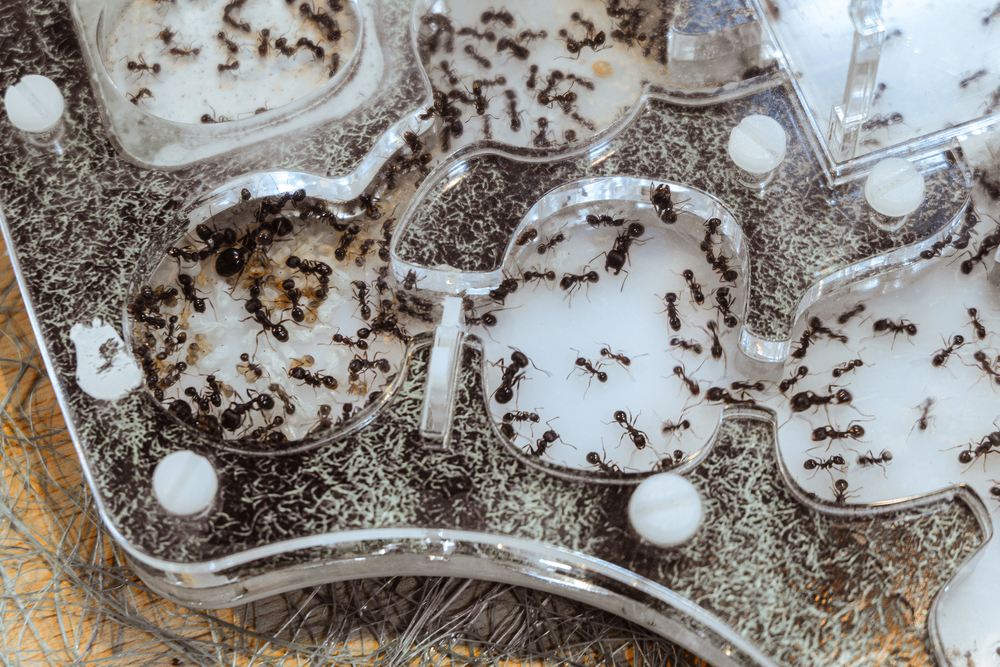Unraveling the Enigma of Ant Supercolonies
In the intricate world of social insects, a phenomenon has emerged that challenges our understanding of ant behavior and evolution. Ant supercolonies, sprawling networks of interconnected nests that can span continents, have captivated researchers and nature enthusiasts alike. These massive cooperative structures defy traditional notions of ant colony boundaries and territorial aggression, offering a fascinating glimpse into the complexities of insect societies.

The Birth of a Supercolony
Ant supercolonies begin with a twist on the traditional ant colony formation. In most ant species, colonies are founded by a single queen who establishes a nest and lays eggs. As the colony grows, it maintains a distinct identity, often engaging in territorial disputes with neighboring colonies. However, in supercolony-forming species, this process takes a different turn.
These ants have evolved to recognize nest mates over much larger areas, effectively expanding their definition of family. Instead of fighting with nearby nests, they cooperate, sharing resources and even exchanging workers. This behavior allows for the rapid expansion of the colony, as new nests can be established without the need for aggressive competition for territory.
Genetic Underpinnings of Supercolony Formation
The key to supercolony formation lies in the genetic makeup of these ants. Research has shown that supercolony-forming species often have lower genetic diversity compared to their non-supercolony counterparts. This reduced genetic variation means that ants from different nests within the supercolony are more closely related, facilitating cooperation on a grand scale.
Scientists have identified specific genes related to nest mate recognition that play a crucial role in this process. Mutations in these genes can lead to a broadening of the criteria for accepting other ants as colony members, paving the way for supercolony formation. This genetic predisposition towards cooperation over vast areas has allowed some ant species to become incredibly successful invaders in new environments.
The Global Reach of Ant Supercolonies
The scale of ant supercolonies is truly staggering. The most famous example is the European supercolony of Argentine ants, which stretches for thousands of kilometers along the Mediterranean coast. This supercolony consists of billions of workers and millions of queens, all cooperating as if they were part of a single, massive colony.
Similar supercolonies have been discovered in Japan, Australia, and the United States. The ability of these ants to form such extensive networks has contributed to their success as invasive species, often outcompeting native ant populations and disrupting local ecosystems.
Ecological Impact and Conservation Concerns
While the cooperation within supercolonies is remarkable, their impact on local ecosystems can be devastating. Supercolony-forming ants often become dominant in their new environments, displacing native species and altering ecological balances. Their success can lead to cascading effects throughout the ecosystem, affecting plants, insects, and even larger animals that depend on the displaced native species.
Conservation efforts to manage supercolony-forming invasive ants have proven challenging. Traditional pest control methods are often ineffective against such large and distributed colonies. Researchers are exploring innovative approaches, including targeted genetic interventions and biological control agents, to mitigate the impact of these super-invaders.
Future Research and Unanswered Questions
The phenomenon of ant supercolonies continues to raise intriguing questions for researchers. How do these massive cooperative networks maintain cohesion over such vast distances? What are the long-term evolutionary implications of this social structure? Can the principles of supercolony formation be applied to understand other complex systems in nature or even human societies?
As technology advances, new tools for studying ant behavior and genetics are emerging. Cutting-edge techniques in genomics and artificial intelligence are helping scientists unravel the mysteries of supercolony formation and maintenance. These insights not only enhance our understanding of ant biology but also offer potential applications in fields ranging from network theory to social science.
The world of ant supercolonies represents a frontier in the study of social insects. As we continue to explore these extraordinary formations, we gain valuable insights into the power of cooperation, the dynamics of invasive species, and the intricate balance of ecosystems. The story of ant supercolonies serves as a reminder of the endless wonders waiting to be discovered in the natural world, challenging our perceptions and inspiring new avenues of scientific inquiry.





